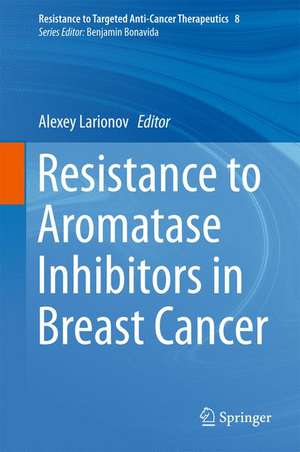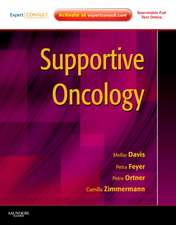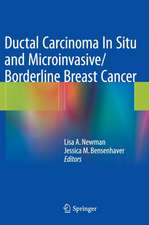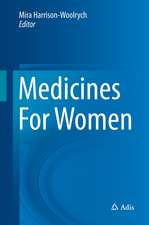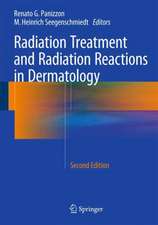Resistance to Aromatase Inhibitors in Breast Cancer: Resistance to Targeted Anti-Cancer Therapeutics, cartea 8
Editat de Alexey Larionoven Limba Engleză Hardback – 5 mai 2015
| Toate formatele și edițiile | Preț | Express |
|---|---|---|
| Paperback (1) | 716.28 lei 6-8 săpt. | |
| Springer International Publishing – 17 oct 2016 | 716.28 lei 6-8 săpt. | |
| Hardback (1) | 723.21 lei 6-8 săpt. | |
| Springer International Publishing – 5 mai 2015 | 723.21 lei 6-8 săpt. |
Din seria Resistance to Targeted Anti-Cancer Therapeutics
- 5%
 Preț: 718.10 lei
Preț: 718.10 lei - 5%
 Preț: 1107.21 lei
Preț: 1107.21 lei - 5%
 Preț: 1096.10 lei
Preț: 1096.10 lei - 5%
 Preț: 1100.30 lei
Preț: 1100.30 lei - 5%
 Preț: 1093.35 lei
Preț: 1093.35 lei - 5%
 Preț: 1103.22 lei
Preț: 1103.22 lei - 5%
 Preț: 1093.88 lei
Preț: 1093.88 lei - 5%
 Preț: 1099.35 lei
Preț: 1099.35 lei - 5%
 Preț: 1096.10 lei
Preț: 1096.10 lei - 5%
 Preț: 841.00 lei
Preț: 841.00 lei - 5%
 Preț: 715.91 lei
Preț: 715.91 lei - 5%
 Preț: 714.83 lei
Preț: 714.83 lei - 5%
 Preț: 1093.88 lei
Preț: 1093.88 lei - 5%
 Preț: 712.25 lei
Preț: 712.25 lei - 5%
 Preț: 1024.59 lei
Preț: 1024.59 lei - 5%
 Preț: 723.57 lei
Preț: 723.57 lei - 5%
 Preț: 721.19 lei
Preț: 721.19 lei - 5%
 Preț: 721.19 lei
Preț: 721.19 lei - 5%
 Preț: 726.68 lei
Preț: 726.68 lei - 5%
 Preț: 717.73 lei
Preț: 717.73 lei
Preț: 723.21 lei
Preț vechi: 761.27 lei
-5% Nou
Puncte Express: 1085
Preț estimativ în valută:
138.40€ • 143.62$ • 115.68£
138.40€ • 143.62$ • 115.68£
Carte tipărită la comandă
Livrare economică 15-29 martie
Preluare comenzi: 021 569.72.76
Specificații
ISBN-13: 9783319179711
ISBN-10: 3319179713
Pagini: 288
Ilustrații: XVI, 288 p. 56 illus., 27 illus. in color.
Dimensiuni: 155 x 235 x 22 mm
Greutate: 0.6 kg
Ediția:2015
Editura: Springer International Publishing
Colecția Springer
Seria Resistance to Targeted Anti-Cancer Therapeutics
Locul publicării:Cham, Switzerland
ISBN-10: 3319179713
Pagini: 288
Ilustrații: XVI, 288 p. 56 illus., 27 illus. in color.
Dimensiuni: 155 x 235 x 22 mm
Greutate: 0.6 kg
Ediția:2015
Editura: Springer International Publishing
Colecția Springer
Seria Resistance to Targeted Anti-Cancer Therapeutics
Locul publicării:Cham, Switzerland
Public țintă
ResearchCuprins
1 Clinical Use of Aromatase Inhibitors in Breast Cancer: History and Present.-2 Structure, Regulation and Polymorphisms of the Aromatase Gene .-3 Structure, Function and Inhibition of Aromatase.-4 In Vivo Models of AI Resistance.-5 Ineffective inhibition of aromatase: a cause for AI resistance?.-6 Understanding the New Biology of Estrogen-Induced Apoptosis and its Application in Patient Care.-7 Ligand-independent signalling through estrogen receptor pathways in breast cancer.-8 Chromatin and epigenetic determinants of resistance to aromatase inhibitors.-9 Aromatase Inhibitor Resistance via Non-endocrine Signalling Pathways.-10 Prediction of Response to Aromatase Inhibitors in Breast Cancer.-11 Clinical Trials Combining Aromatase Inhibitors with Other Targeted Treatments.-12 Aromatase Inhibitors Beyond Breast Cancer: Endometrium vs Breast Puzzle and Other Issues.
Notă biografică
Alexey Larionov, Ph.D. is a researcher at the Academic Laboratory of Medical Genetics and Statistics and Computational Biology Lab at the University of Cambridge. Dr Larionov is an expert in endocrine resistance in breast cancer, as well as whole exome sequencing data analysis. Dr. Larionov has received over 1019 citations.
Textul de pe ultima copertă
The book brings together current knowledge about molecular and clinical aspects of resistance to aromatase inhibitors (AIs). The topics and features include:
- The history of development and clinical role of aromatase inhibitors in breast cancer.
- The structure and function of aromatase gene and protein, including tissue-specific splicing and regulation of the gene, crystal structure of the enzyme, functioning of its active site and structural basis for development of new aromatase inhibitors.
- Experimental and pre-clinical models of resistance to aromatase inhibitors (including cell lines and xenografts) as well as methods and results of measuring oestrogen concentrations in blood and tumour tissue of breast cancer patients.
- Diversity of molecular mechanisms of AI resistance, including (i) ligand-independent signalling through oestrogen receptor pathway, (ii) hypersensitivity to low concentrations of oestrogens, (iii) crosstalk with non-endocrine signalling (including PI3K/mTOR, IGF, GDNF and Myc pathways), (iv) involvement of oestrogen-induced apoptosis and tissue microenvironment (including inflammatory immune cells and adipocytes) as well as (v) the role of epigenetic mechanisms and pioneering factors in ER signalling and AI resistance.
- Molecular markers and multi-gene signatures to predict response to AIs, clinical trials aimed at preventing or overcoming resistance by combining AIs with novel targeted agents (including AI combinations with HER2, EGFR, mTOR, PI3K, Akt, CDK4/6, FGFR, HDAC, IGF-1, Src, proteosome- and angiogenic- targeting agents).
- A review of the effects and clinical indications of aromatase inhibitors beyond breast cancer.
Caracteristici
Brings together the current knowledge of molecular and translational aspects of AIs resistance in breast cancer Provides mechanisms of physiological resistance and potential biomarkers that recognize or predict mechanisms of resistance Explores acquired, adjuvant, pre-operative, and metastatic resistance Includes supplementary material: sn.pub/extras
